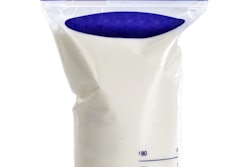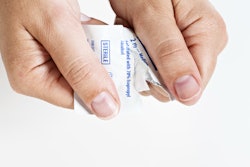
Some I would never have believed at the time—mustard and ketchup in plastic containers, water bottles bundled together and shrink-wrapped. And now there is home delivery, perhaps even by a drone, of items purchased over the Internet a few hours prior to delivery. Wow!
The lesson I have learned in working with changing packaging trends is the crucial need to understand the entire shipping and distribution process involved in delivering products to your customers.
Marketing and design groups think of new products, R&D determines how to make the product, and the packaging group develops the packaging. But before the package is developed, the packaging engineer must identify and understand how the product will be shipped and distributed to your customer base, from pallet loads to single-selling units in the U.S. and/or around the world. It is essential to understand even what seem to be minor details.
One story I would like to share is about understanding your entire distribution network. A friend was developing packaging for a large decorated holiday item produced overseas and distributed throughout North America. Corrugated shipping containers were designed and developed for the containers to withstand the rigors of both overseas shipping and truck shipping to distribution centers in North America, and also for individual product units being shipped to stores. However, after the first shipments, a very high occurrence of breakage was detected at the stores.
My friend was dumbfounded. She reviewed her notes and test results and could not determine how damaged product units were arriving at the stores. She then created a wishbone damage assessment and followed the pack out through shipment, step by step. It was not until she asked how the product units were taken off the ship that she learned the pallets were removed from the container by clamp trucks. The clamping action of the trucks was damaging the product units through sidewalls of the shippers. Clamp trucks were never discussed, and the pallet loads were designed for forklift handling.
Lesson learned: Know every step of your shipping and transportation handling of your product before designing your containers.
Now let’s look at current trends. New trends in shipping and transportation are causing pain points for packaging engineers. You need to be aware that your entire shipping and distribution chain now relates to two trends—e-commerce and smaller shipping case sizes.
During this year’s International Safe Transit Association (ISTA) TransPack Forum, packaging engineers from around the world shared stories of shipping and transportation issues caused by smaller packages being damaged when shipped on pallets, as well as damage occurring during LTL (less than truckload shipping) and unit parcel deliveries.
Smaller shipper sizes present different considerations when developing your entire package. For example, what type of pallet is being used? If gaps exist between the boards, your shipper is more prone to crushing. If you are not using solid top pallets, you need to use a slip sheet. With small shipping containers, you might get a peeling-off effect if the containers are not interlocked in the pallet pattern. Peel-off can be prevented by using a tight interlocking pallet pattern and possibly using corner posts and tight shrink-wrapping.
Once the pallet load is broken down, you must then consider how the package will be handled for delivery to the customer. Will it be individually shipped via courier delivery services, including the U.S. Postal Service? Will it be placed in a master shipper with other products?
Consider the weather and storage conditions your product will experience during shipping and transportation. Cold chain, high altitude, and container shipping across an ocean are points to be addressed in package development.
The goal is to deliver a usable finished goods package to your customers. We have to learn from our experiences and the experiences of our fellow engineers to eliminate recurring issues. Networking at organizations such as IoPP, ISTA, ASTM, and PMMI have provided me with great insights on possible packaging watch-outs during package development. I recommend reviewing your projects with fellow engineers and using these packaging organizations to your benefit when developing a package to meet the new shipping and transportation requirements of today’s packages.


























